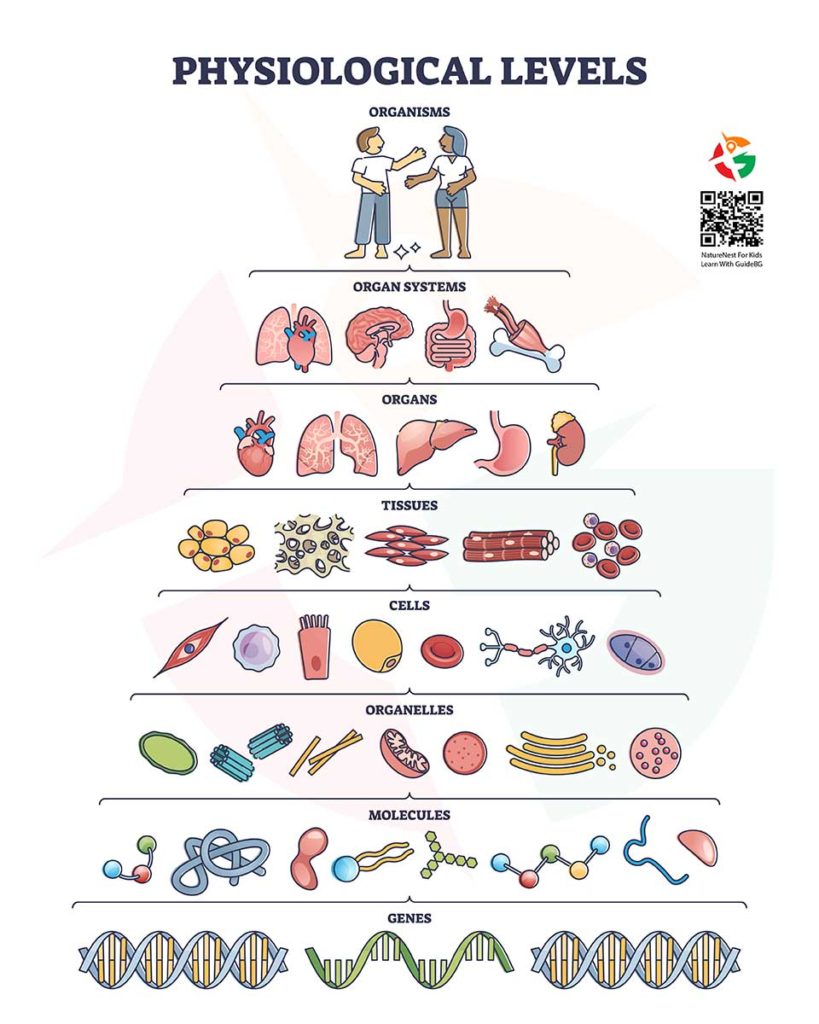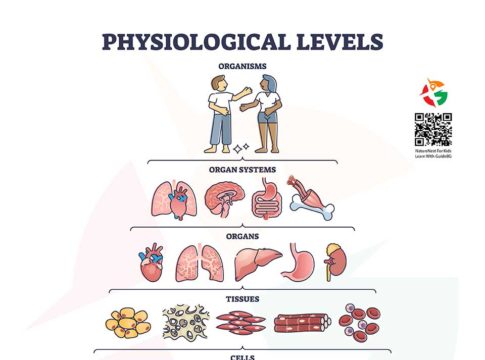Have you ever wondered what makes up your body and how everything works together to keep you alive and kicking? Let’s take an exciting journey through the physiological levels of the organization, from the tiniest parts to the amazing you!
Genes
Imagine genes as the instructions that tell your body how to grow and function. They are made of DNA and are the blueprint for everything about you, from your hair color to how your body works.
Molecules
Molecules are tiny particles that are made up of atoms. Think of them as the building blocks of everything in your body. Water, proteins, and carbohydrates are all types of molecules that are essential for life.

Organelles
Organelles are the little machines inside your cells. Each one has a special job. For example, mitochondria are like power plants that produce energy, while the nucleus is the control center that holds your DNA.
Cells
Cells are the basic units of life and are like tiny factories that perform all the functions needed to keep you alive. There are many types of cells, each with a unique role. Muscle cells help you move, nerve cells send messages, and red blood cells carry oxygen.
Tissues
When similar cells work together, they form tissues. For instance, muscle tissue helps you move, while nerve tissue helps you feel and think. Your skin is made of epithelial tissue, which protects your body.
Organs
Organs are made up of different tissues working together to perform specific tasks. Your heart pumps blood, lungs help you breathe, and your stomach digests food. Each organ has a vital role in keeping you healthy.
Organ Systems
Organ systems are groups of organs that work together to carry out complex functions. For example, the digestive system, which includes the mouth, stomach, and intestines, helps break down food and absorb nutrients. The circulatory system, including the heart and blood vessels, moves blood around your body.
Organisms
Finally, all these systems combine to make an organism – that’s you! An organism is a living being that can grow, reproduce, and respond to its environment. Everything from a tiny ant to a giant whale is an organism of these same levels of organization.
Linking It All Together
Understanding these physiological levels helps us see how complex and fascinating life is. Each level builds upon the previous one, creating a structure that allows organisms to survive and thrive. For a simpler and more linear view, check out our section on The Marvelous World of Biological Organization, where we break down the steps from atoms to a whole organism.
Fun Fact: You Are a Walking Wonder!
Did you know your body has over 37 trillion cells working together? Every second, your cells are busy ensuring you can play, think, and grow. That’s why it’s important to take care of your body by eating well, exercising, and getting plenty of rest.
You can better appreciate how everything inside you works together to keep you healthy and strong. So next time you look in the mirror, remember that you are a marvel of biological engineering, with countless tiny parts working harmoniously to make you who you are!



